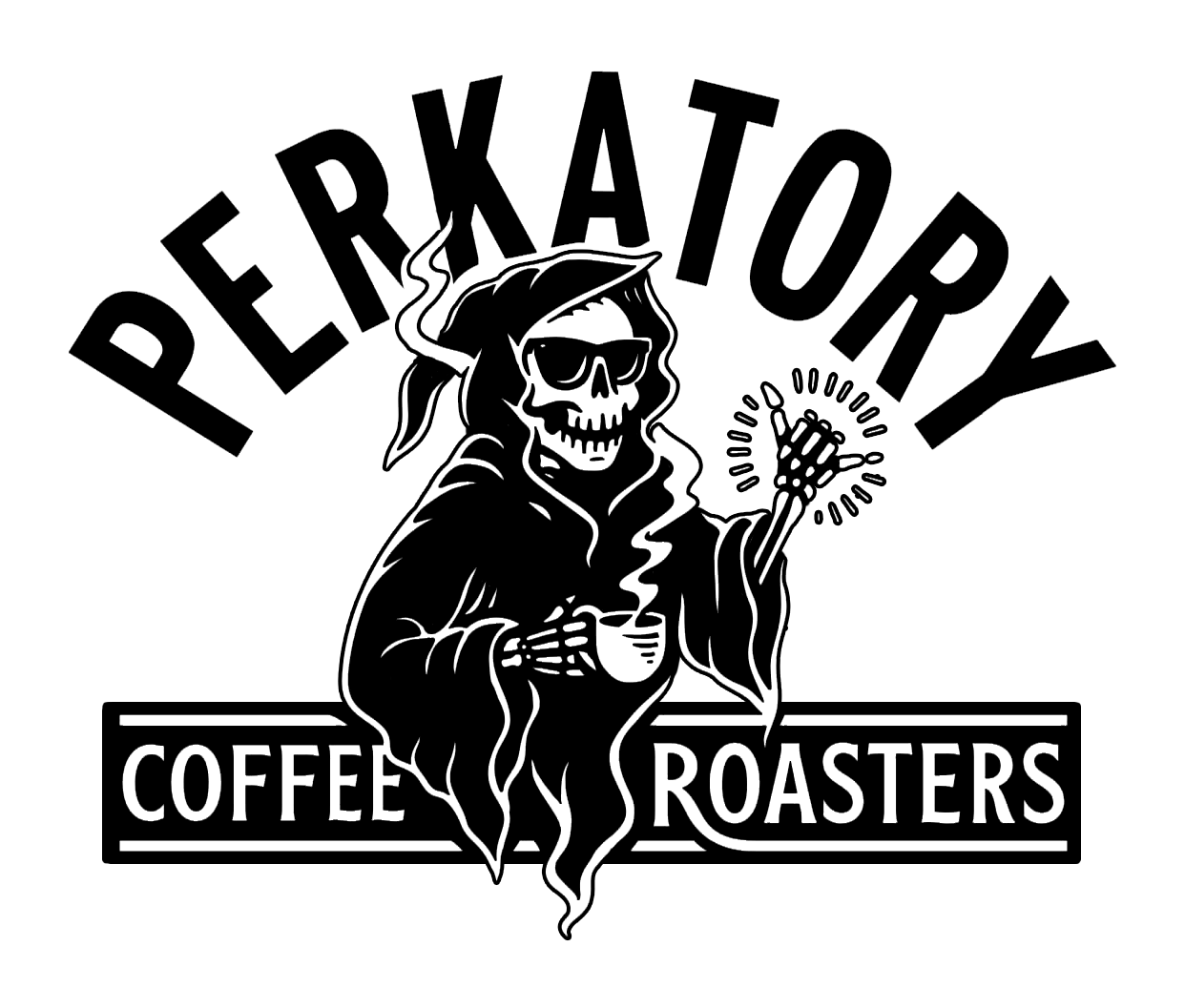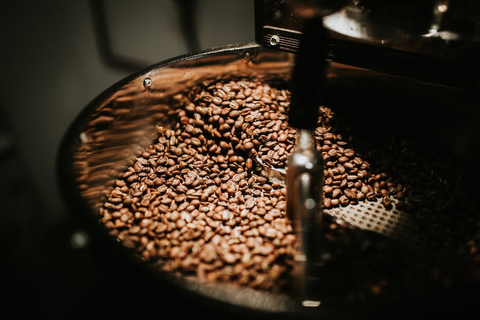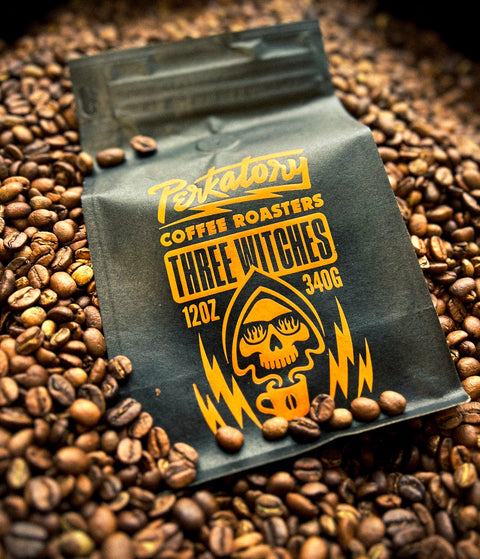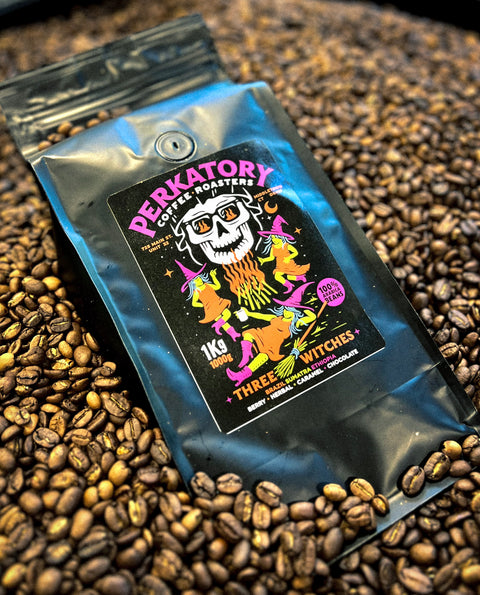Coffee has become an integral and cherished part of our daily lives, satisfying our craving for that perfect cup of caffeine to jump-start our day. But have you ever paused to ponder the intriguing journey that transforms coffee beans into the delectable brew we enjoy? The secret lies within the captivating roasting process, a meticulous craft that delicately coaxes out the distinctive flavors and enticing aromas locked within each coffee bean.
This comprehensive guide will explore the coffee roasting process deeper into its intricacies and uncover the factors influencing the final product. Prepare to unravel the mysteries behind roasting as we unravel the secrets of this enchanting world of coffee.
The Roasting Process of Coffee Beans
Coffee roasting is a complex chemical process that transforms green coffee beans into aromatic brown coffee beans used to make our favorite beverage. The process involves heating the beans in a controlled environment until they reach a specific temperature and color. This roasting process is what gives coffee its unique flavor profile and aroma.
Factors Affecting Coffee Roasting

Several factors can affect the roasting process, including the type of bean, the roasting equipment used, and the roaster's skills. Let's take a closer look at some of these factors:
- Type of Bean: The kind of coffee bean used plays a significant role in the roasting process. Different varieties of coffee beans have distinct flavors and require other roasting profiles to bring out their best qualities.
- Roasting Equipment: The choice of roasting equipment employed can impact the ultimate flavor and scent of the coffee. Traditional drum roasters, hot air fluid bed roasters, and infrared roasters affect the beans differently.
- Roaster's Skills: The roaster's experience and knowledge also play a crucial role in the coffee roasting process. A skilled roaster knows how to control factors such as temperature, airflow, and time to create the perfect roast for each type of bean.
The Stages of Roasting
The coffee roasting process has four stages: drying, browning, first crack, and second crack. Let's briefly look at each stage:
- Drying: In this stage, the beans are slowly heated to remove any leftover moisture in the beans.
- Browning: As the temperature increases, the beans change color and release oils, giving them a distinct aroma.
- First Crack: This is the crucial stage where the beans expand and release CO2, making a cracking sound, hence the name "first crack."
- Second Crack: In this stage, the beans are roasted for longer until they reach their desired color and development level. The beans will make a second crack sound when they are done.
What Are Green Coffee Beans?

Green coffee beans came from Coffea fruits. During the harvest, these beans are extracted from the fruit and processed through either a dry or wet method. The dry method involves leaving the beans to dry naturally in the sun. On the other hand, the wet method uses water to remove the mucilage before the beans are dried. The resulting green coffee beans have a longer shelf life and retain their quality until they undergo the roasting process. They have a slightly grassy and sour flavor compared to roasted beans' rich and robust taste—the transformation of these into what we recognize as coffee results from the fascinating and intricate roasting process.
Drying the Green Coffee Beans
Before being roasted, green coffee beans undergo a crucial drying process to decrease their moisture content. This step is vital as it helps prevent mold growth on the beans during storage. Typically, these contain approximately 10-13% moisture. This moisture is further reduced to around 3% during the roasting process. The drying process can occur naturally by exposing the beans to sunlight or through mechanical methods like hot air drying. This meticulous process ensures the beans are ready for the perfect Roast, resulting in a delightful cup of coffee.
Exploring Roast Profiles: Light, Medium, and Dark Roast
Different roast profiles can result in other flavor profiles, even for the same type of bean. While a light roast will bring out the coffee's natural sweetness and acidity, a medium roast may have more balanced flavors, and a dark roast will produce deeper, bittersweet tones. It all depends on personal taste and preference.
Roast Levels of Roasted Beans

Coffee roasts are classified into four primary levels: light, medium, medium-dark, and dark. Each roast level has its unique characteristics that appeal to different taste preferences. Light roasts tend to have a brighter acidity and more subtle flavors, while dark roasts have smoky and bitter tones. A skilled roaster can modify the roast profile to bring out different flavor profiles from the same bean, providing endless possibilities for coffee lovers to explore.
- Light Roast: Also known as a 'cinnamon roast', light roast beans have a golden brown hue and no oil on the surface as they have not roasted long enough for the oils to break through. Flavor-wise, they retain many of the original bean's characteristics, exhibiting bright acidity and complex flavors that can often be described as fruity or floral.
- Medium Roast: Commonly called 'city roast' or 'American roast', medium roast beans are medium brown with a more robust flavor and a non-oily surface. These roasts feature a well-balanced flavor, aroma, and acidity. They are often preferred by those who seek the perfect balance between the unique flavors of the bean and the Roast.
- Medium-Dark Roast: Known as 'full-city roast', these beans have a rich and dark color with some oil on the surface. They offer a slightly bittersweet aftertaste with a fuller body than lighter roasts. Dark roast coffees often reveal flavors from the roasting process, such as notes of spice or chocolate.
- Dark Roast: 'French roast' or 'Italian roast' are typical dark roasts with a shiny, oily surface. The roasted beans are dark brown almost black, and the flavors of the roasting process are most evident in these beans. These roasts tend to have less acidity and heavy body and often carry smoky sweetness or even burnt sugar flavors.
Each roast level caters to different taste preferences, and exploring them can be an exciting journey for any coffee connoisseur.
Exploring Coffee Roasters
Coffee roasters are specialized machines that transform raw beans into the rich, aromatic beans we recognize and love. These machines vary in size, from small home roasters to large industrial ones, using direct or indirect heat to roast the beans.
Direct Heat Roasters
Also known as drum roasters, these machines roast the green beans by directly applying heat to a rotating drum where the beans are placed. The rotation helps to ensure that the beans are roasted evenly. This traditional roasting method is still widely used today, especially in larger-scale operations.
Indirect Heat Roasters
These roasters, also known as hot air or fluid bed roasters, roast the beans using hot air, which circulates the beans. This method ensures a more even roast and is typically used in smaller, home roasting machines.
Regardless of the type of roaster used, the objective is to carefully control the heat and duration of the Roast to bring out the unique flavors of each coffee bean. The choice of roaster can also impact the roast profile and flavor; hence, it's a crucial tool in the coffee-making process. Whether you're a casual coffee drinker or a seasoned barista, understanding the role of the coffee roaster can deepen your appreciation for the cup of coffee in your hand.
Cooling the Beans
After roasting, coffee beans need to be cooled down quickly to stop the cooking process and preserve the flavors. This is typically accomplished through either air cooling or water quenching.
- Air Cooling: This method uses a large amount of air to dissipate the heat from the beans. The beans are moved around, allowing the air to cool them evenly. It preserves the beans' flavors and aromas, although it may take longer compared to water quenching.
- Water Quenching: This process involves spraying the beans with water to cool them down quickly. While it's faster than air cooling, it might dilute the beans' flavors slightly. It is more commonly used in commercial roasting due to its speed and efficiency.
The cooling method chosen significantly influences the coffee's final flavor profile, thus being a critical step in the roasting process.
Visit Perkatory Coffee Roaster in Middletown, CT
If you're looking to explore different roast profiles and flavors, visit Perkatory Coffee Roaster in Middletown, CT. At Perkatory, every cup of coffee should be an adventure, and we invite you to join us on the journey. Come in today and discover your new favorite coffee roast! So, don't hesitate to stop by our cozy cafe for freshly roasted coffee, such as Brazil Super Fine, Colombia Montebello, Congo Umaja, and more.
Conclusion
Coffee roasting is an art that significantly impacts the flavor and aroma of the coffee. The roast level, from light to dark, plays a crucial role in determining the coffee's taste, accentuating the unique flavors and attributes of the beans. The roasting process, involving a variety of chemical reactions, brings out complex flavors that make each cup of coffee a unique experience. The type of roaster used, be it direct heat or indirect heat, also influences the roast profile and the resulting flavor. Moreover, the cooling process, whether air cooling or water quenching, is vital in preserving the beans' flavors and aromas.
At Perkatory Coffee Roaster in Middletown, CT, we strive to bring you the best in coffee roasting, showcasing a variety of roast profiles for your exploration and enjoyment. With every cup, we invite you to embark on a flavorful adventure, deepening your appreciation for the transformative power of coffee roasting.
Frequently Asked Questions (FAQs)
What is the purpose of coffee roasting?
Coffee roasting is a process that transforms raw beans into the aromatic, flavorful beans that we use to brew our favorite coffee. The process helps to bring out the beans' unique characteristic flavors and aromas.
Can the type of roasting equipment used affect the flavor of the coffee?
Yes, the type of roasting equipment used affects the overall aroma and taste of the coffee. Different roasters, including drums, hot air fluid beds, and infrared roasters, can have varying effects on the beans.
What are the four stages of roasting?
The four stages of roasting are drying, browning, first crack, and second crack. Each of these stages contributes to the development of the coffee bean's flavor and aroma.
Does roasting affect the caffeine content in the coffee?
Yes, the roasting process affects coffee's caffeine content. Generally, dark roasts have less caffeine than light roasts due to the longer roasting process. However, this can vary depending on the type of bean and the roasting profile used.
Coffee roasting is a fascinating process involving a delicate balance of art and science to bring out the best flavors from each bean. Keep exploring different roast profiles to discover your perfect cup of coffee!



